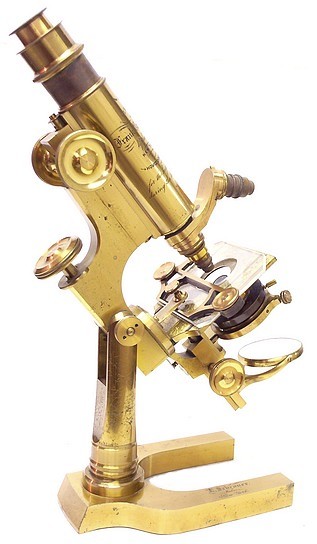
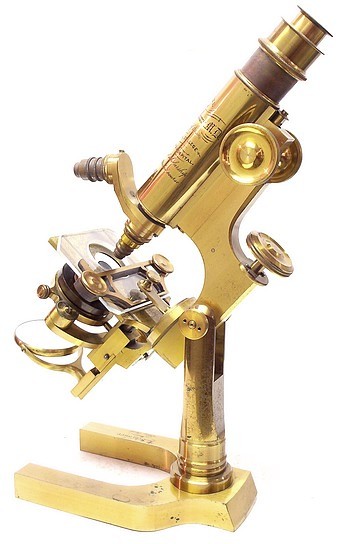
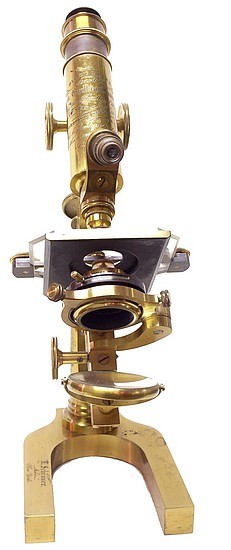
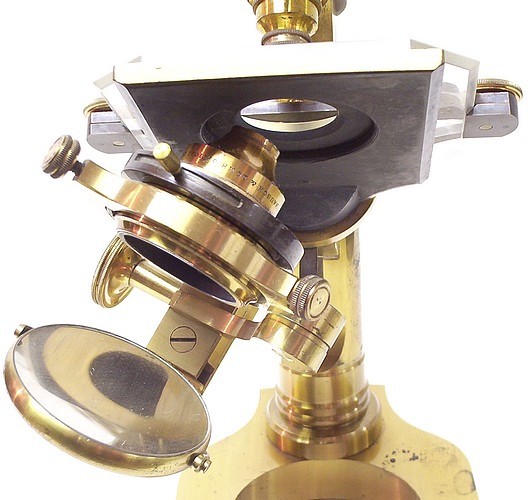
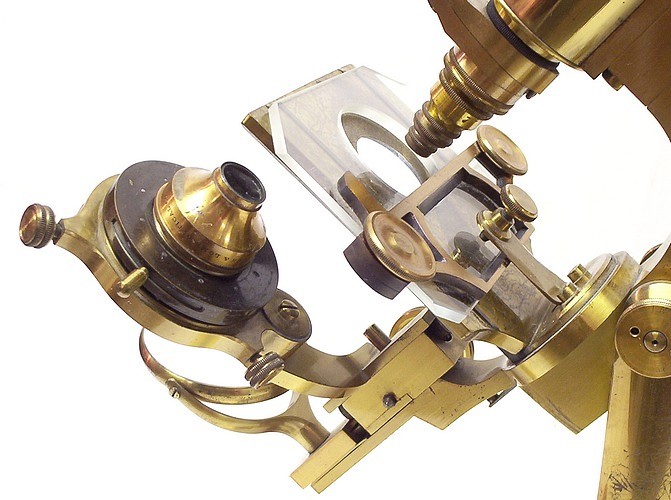
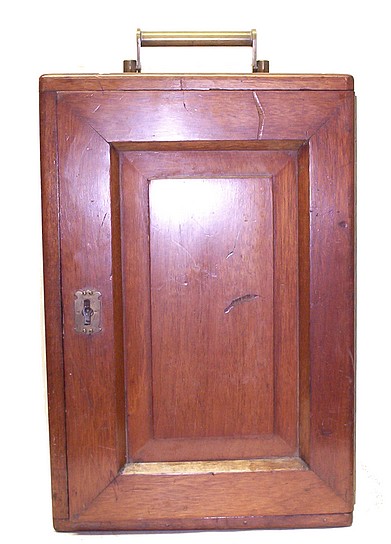
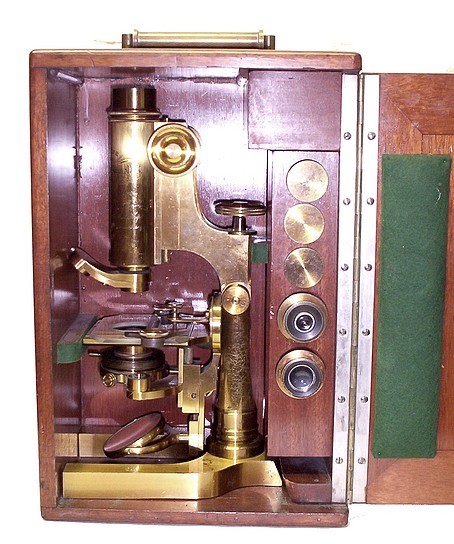
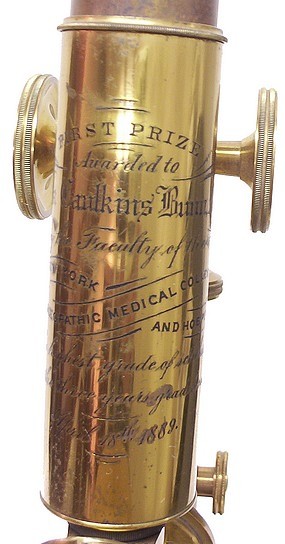
The tube of the microscope is engraved:
First Prize
Awarded to
Frank Caudkins Bunn, M.D.
by the Faculty of the
New York
Homeopathic Medical College
and Hospital
for the highest grades of
scholarship
during the three years graded
course
May 18th 1889
Information about Frank C. Bunn can be found here and here.
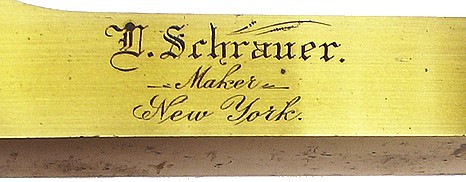
The microscope, with its horseshoe base and tapered pillar, resembles the continental model that was increasingly becoming more popular during the period. However, the microscope differs from the standard continental microscope in an important way. In the continental model, the fine adjustment mechanism moves the entire limb along with the body-tube. With this Schrauer model however, the fine adjustment is actually a spring-loaded long lever mechanism. One end of the lever engages the screw of the adjustment knob while the other end moves the body tube. The limb remains stationary. The substage of this microscope consists of a rack and pinion adjusting iris diaphragm with centering screws on a swiveling arm. The upper portion of the diaphragm is threaded to accept an Abbe condenser lens. The mirror slides independently on the arm, which can be swung in place above the stage for illumination of opaque objects. The brass stage has a glass and brass slide carrier. The microscope came cased with one Leitz and two Hartnack objectives, and two wide diameter eyepieces.
The microscope is signed on the base as above. Leopold Schrauer first began the manufacture of microscopes in Boston. By 1877, he was located in New York City at various addresses. Schrauer microscopes are relatively uncommon. In the book entitled A Short History of the Early American Microscopes by D. Pagitt, it is stated "It is somewhat strange that Schrauer's microscopes are not more common today, since he was apparently in business for more than 20 years. This may be partially explained by Schrauer's proclamation that he gave no discount to the trade which would indicate that he did not have access to the traditional marketing agencies".
For more information about these prize microscopes see the article: